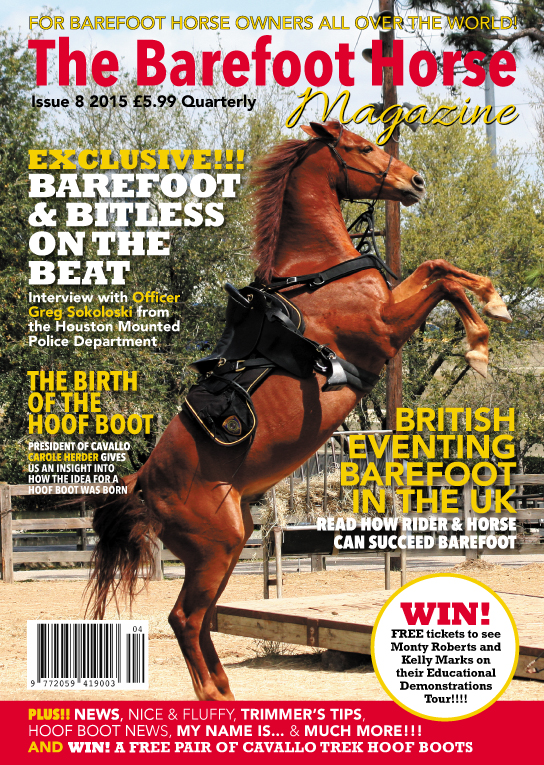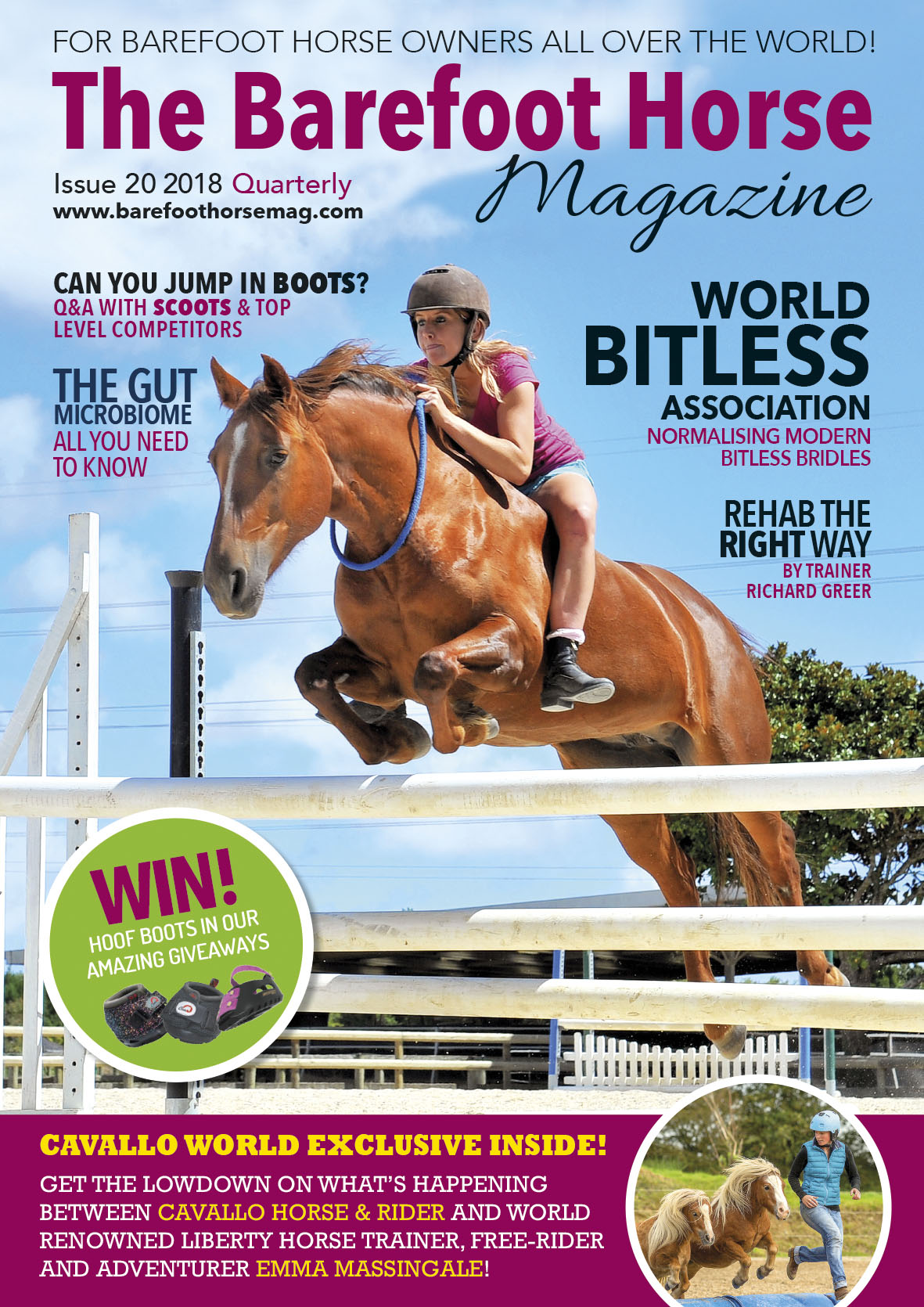This statement ‘all horses can go barefoot’ gets many owners just a trifle hot under the collar.
Many of these people will have already tried barefoot but it didn’t ‘work’ for their horse, or they are of the opinion that for a horse to do any amount of decent work, then it’s common sense to use shoes to ‘support’ the horse.
Well if you’re a seasoned barefooter like I am, then you’ll know that if you take the skeptical owner’s horse, change the environment
, change the diet and of course the hoofcare, then gradually that horse, that couldn’t cope, is actually starting to grow healthier feet and getting sounder.
Sometimes in order for this to happen, that horse has to change owners…why? Because the original owner simply didn’t have the mindset needed to keep their horse barefoot. They didn’t have the determination to change what was necessary at a consistent level (& that’s the key) before giving up and exclaiming ‘barefoot doesn’t work for all horses’.
Perhaps they didn’t truly know what to do in order to succeed barefoot?
I want to reassure those of you who are perhaps starting your barefoot journey, or having a few ups and downs, that the statement ‘all horses can go barefoot’ is true, and I’ll tell you why.
I have been told countless times by owners, vets, farriers either to my face or as keyboard warriors, that I and this amazing magazine, are selling something which is not achievable in the modern world, that it is spreading propaganda and giving people false hope.
These people who say this, are the ones that failed or didn’t even try in the first place. These people are hooked on a method of nailing metal to a horse’s foot, so that they can continue the practices that caused the shoe to be put there in the first place.
Sounds harsh? Yes it is…for the horse.
Here is what the statement should read in full:
“All horses can go barefoot…but not all owners”
If you want to take your horse barefoot, you can! If you are worried that your horse’s health and fitness is being compromised because of the traditional practices you have been following, then you’d be right.
This magazine isn’t selling a dream, something that isn’t achievable, this magazine is spreading the knowledge far and wide that owners need to take their horses barefoot and succeed.
Those who disbelieve it (the majority of course will not have even read the mag) are no way going to accept the reality that it’s not the horse’s fault it can’t go barefoot…it’s theirs!
I personally own 13 horses…yep I know mad! But those 13 horses will never go back into the traditional world because if they do they will go straight back to where they were when I came upon them. Every single one of my 13 horses has a story, every single one was having problems with their feet and or health…some about to be put to sleep because their current owner had been told, this horse will not survive.
Guess what….every single one is now healthy, sound and of course barefoot.
I have personally watched and helped owners with horses who were failing in the traditional world, completely succeed at barefoot when the elements that were needed to succeed were put into place and the owner had the right people and support around them.
And the best bit? It’s not that difficult.
In every issue of the mag, there are stories of how owners decided to take the shoes off their horse and go barefoot against pretty much everyone’s advice. Many of them had to learn the hard way, we’re ridiculed, targeted and often spurned, and yet still succeeded taking their horse barefoot.
Why? Because they changed the essential elements that were needed in order to succeed…and their mindset…and they stuck at it…consistently.
This magazine isn’t just for us seasoned barefooters, it’s for owners struggling to find that missing piece in the jigsaw puzzle that can help them successfully take their horse barefoot.
So
, on a final note. Yes all horses can go barefoot. Yes the barefoot world is growing fast, in massive numbers everyday…and yes if you want to keep up with what is going on in this exciting world and learn how to keep your horse barefoot for life…then this mag is for you.
We are not the number 1 barefoot horse mag in the world for nothing! We work hard at making sure every issue is packed with real life stories
, case studies and education to keep you company in your barefoot journey.
Don’t listen to those who say that all horses cannot go barefoot…get the right advice from the right people and watch your horse succeed!
Here’s a link to get this mag into your life now, your horse will be forever grateful.
This mag is for every horse owner all over the world. We ship the printed copies worldwide but you can also choose to read them online, and if you sign up to our newsletter you’ll get an immediate 10% discount off your first purchase.
You see the pic attached to this post?
That is an aerial shot of my ‘track system’ when I used to live in the UK (I live in France now). See the lush green fields surrounding it? Those ‘lovely’ green pastures were why my first pony Sunny became laminitic just a few weeks after I bought him. Then I learnt the hard way how to get him better…and he’s still with us today, 20 years later, even though the vets told me he would never recover and I should put him to sleep! I wish this mag had existed then!
Of course you don’t need a track like this
, but I ended up rehabbing many horses, so for me it was essential.
Don’t listen to those who say ‘you can’t…’, listen to those who say ‘you can!’
Happy Barefooting!
Lindsay, Editor



